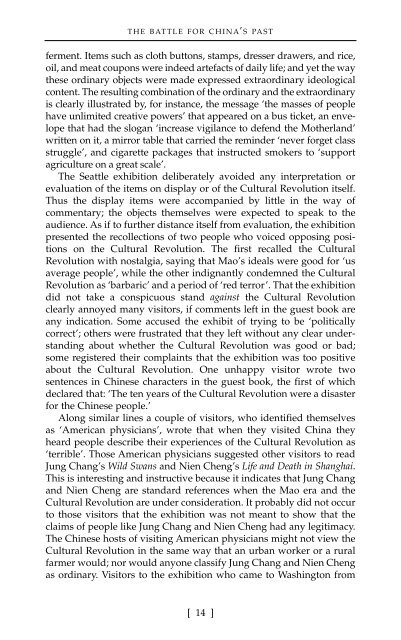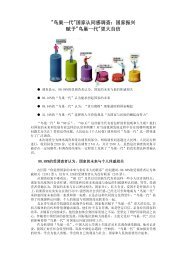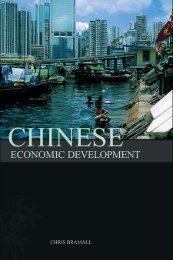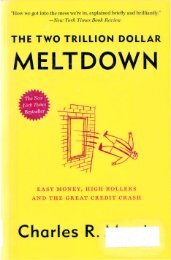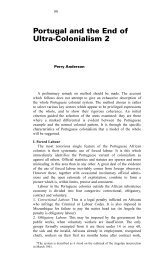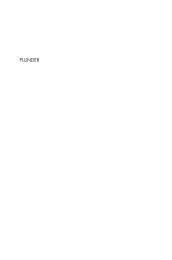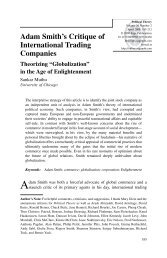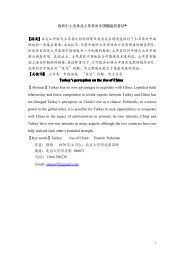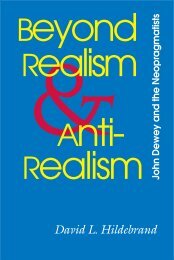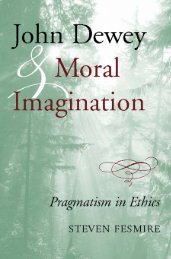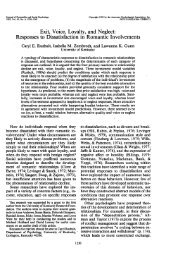Battle for China's Past : Mao and the Cultural Revolution
Battle for China's Past : Mao and the Cultural Revolution
Battle for China's Past : Mao and the Cultural Revolution
Create successful ePaper yourself
Turn your PDF publications into a flip-book with our unique Google optimized e-Paper software.
THE BATTLE FOR CHINA’ S PAST<br />
ferment. Items such as cloth buttons, stamps, dresser drawers, <strong>and</strong> rice,<br />
oil, <strong>and</strong> meat coupons were indeed artefacts of daily life; <strong>and</strong> yet <strong>the</strong> way<br />
<strong>the</strong>se ordinary objects were made expressed extraordinary ideological<br />
content. The resulting combination of <strong>the</strong> ordinary <strong>and</strong> <strong>the</strong> extraordinary<br />
is clearly illustrated by, <strong>for</strong> instance, <strong>the</strong> message ‘<strong>the</strong> masses of people<br />
have unlimited creative powers’ that appeared on a bus ticket, an envelope<br />
that had <strong>the</strong> slogan ‘increase vigilance to defend <strong>the</strong> Mo<strong>the</strong>rl<strong>and</strong>’<br />
written on it, a mirror table that carried <strong>the</strong> reminder ‘never <strong>for</strong>get class<br />
struggle’, <strong>and</strong> cigarette packages that instructed smokers to ‘support<br />
agriculture on a great scale’.<br />
The Seattle exhibition deliberately avoided any interpretation or<br />
evaluation of <strong>the</strong> items on display or of <strong>the</strong> <strong>Cultural</strong> <strong>Revolution</strong> itself.<br />
Thus <strong>the</strong> display items were accompanied by little in <strong>the</strong> way of<br />
commentary; <strong>the</strong> objects <strong>the</strong>mselves were expected to speak to <strong>the</strong><br />
audience. As if to fur<strong>the</strong>r distance itself from evaluation, <strong>the</strong> exhibition<br />
presented <strong>the</strong> recollections of two people who voiced opposing positions<br />
on <strong>the</strong> <strong>Cultural</strong> <strong>Revolution</strong>. The first recalled <strong>the</strong> <strong>Cultural</strong><br />
<strong>Revolution</strong> with nostalgia, saying that <strong>Mao</strong>’s ideals were good <strong>for</strong> ‘us<br />
average people’, while <strong>the</strong> o<strong>the</strong>r indignantly condemned <strong>the</strong> <strong>Cultural</strong><br />
<strong>Revolution</strong> as ‘barbaric’ <strong>and</strong> a period of ‘red terror’. That <strong>the</strong> exhibition<br />
did not take a conspicuous st<strong>and</strong> against <strong>the</strong> <strong>Cultural</strong> <strong>Revolution</strong><br />
clearly annoyed many visitors, if comments left in <strong>the</strong> guest book are<br />
any indication. Some accused <strong>the</strong> exhibit of trying to be ‘politically<br />
correct’; o<strong>the</strong>rs were frustrated that <strong>the</strong>y left without any clear underst<strong>and</strong>ing<br />
about whe<strong>the</strong>r <strong>the</strong> <strong>Cultural</strong> <strong>Revolution</strong> was good or bad;<br />
some registered <strong>the</strong>ir complaints that <strong>the</strong> exhibition was too positive<br />
about <strong>the</strong> <strong>Cultural</strong> <strong>Revolution</strong>. One unhappy visitor wrote two<br />
sentences in Chinese characters in <strong>the</strong> guest book, <strong>the</strong> first of which<br />
declared that: ‘The ten years of <strong>the</strong> <strong>Cultural</strong> <strong>Revolution</strong> were a disaster<br />
<strong>for</strong> <strong>the</strong> Chinese people.’<br />
Along similar lines a couple of visitors, who identified <strong>the</strong>mselves<br />
as ‘American physicians’, wrote that when <strong>the</strong>y visited China <strong>the</strong>y<br />
heard people describe <strong>the</strong>ir experiences of <strong>the</strong> <strong>Cultural</strong> <strong>Revolution</strong> as<br />
‘terrible’. Those American physicians suggested o<strong>the</strong>r visitors to read<br />
Jung Chang’s Wild Swans <strong>and</strong> Nien Cheng’s Life <strong>and</strong> Death in Shanghai.<br />
This is interesting <strong>and</strong> instructive because it indicates that Jung Chang<br />
<strong>and</strong> Nien Cheng are st<strong>and</strong>ard references when <strong>the</strong> <strong>Mao</strong> era <strong>and</strong> <strong>the</strong><br />
<strong>Cultural</strong> <strong>Revolution</strong> are under consideration. It probably did not occur<br />
to those visitors that <strong>the</strong> exhibition was not meant to show that <strong>the</strong><br />
claims of people like Jung Chang <strong>and</strong> Nien Cheng had any legitimacy.<br />
The Chinese hosts of visiting American physicians might not view <strong>the</strong><br />
<strong>Cultural</strong> <strong>Revolution</strong> in <strong>the</strong> same way that an urban worker or a rural<br />
farmer would; nor would anyone classify Jung Chang <strong>and</strong> Nien Cheng<br />
as ordinary. Visitors to <strong>the</strong> exhibition who came to Washington from<br />
[ 14 ]


